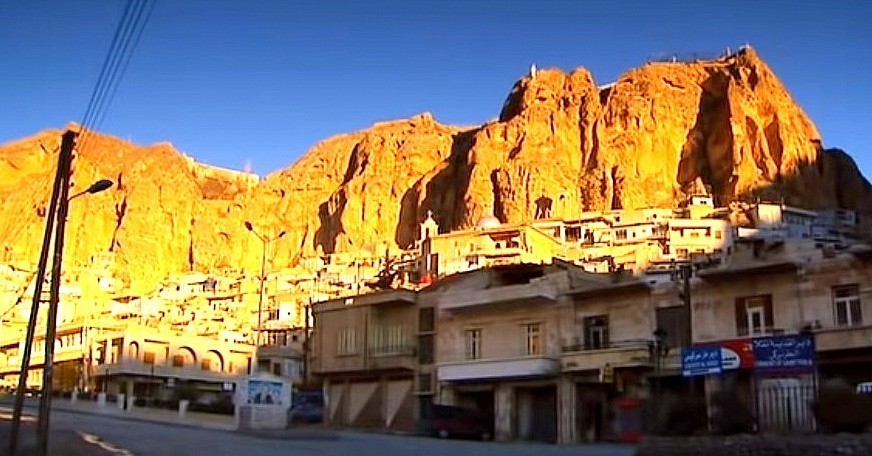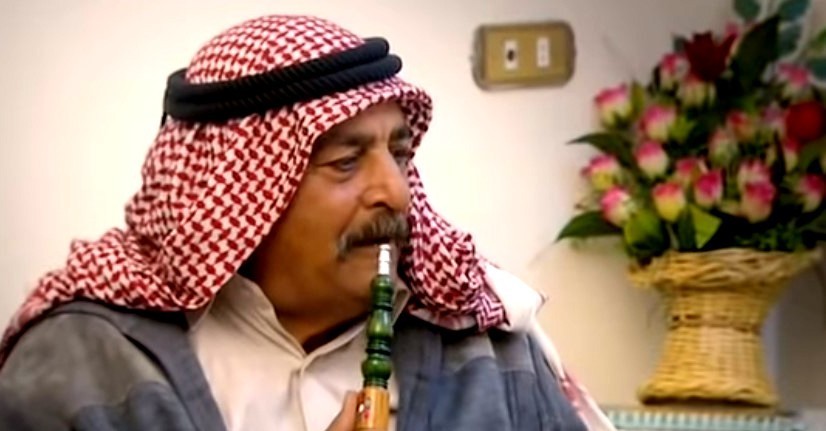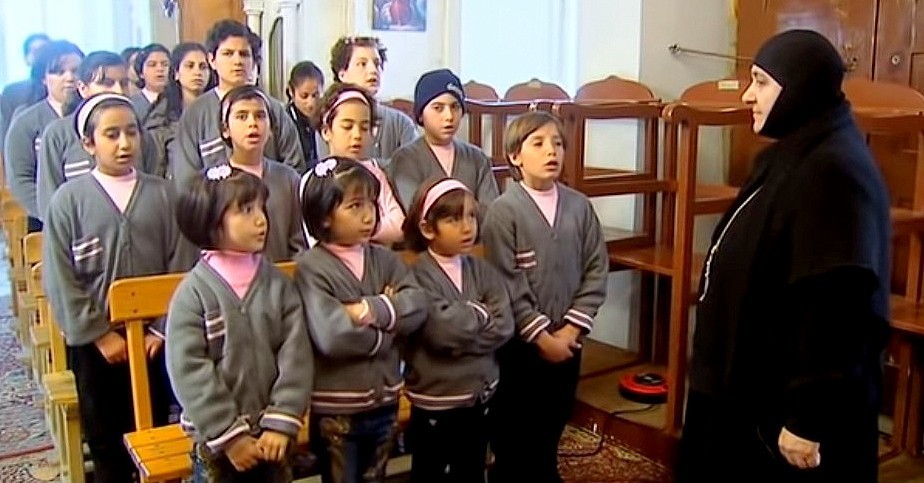One language of ancient Syria was Aramaic, as spoken at the time of Jesus of Nazareth and unchanged even today in remote mountains. It was the language of Jesus, his disciples and most of the people who attended their gigs. It has survived changing dynasties and remains the language of Christians and Muslims who live peacefully side by side in the last outpost –
a biblical village called Maaloula.
One medieval despot threatened to cut out the tongues of any villagers heard speaking their exclusive language. Despite this, generations of their ancestors have spoken Aramaic and successfully passed it on to the next inhabitants. In Maaloula, Aramaic is the language of the streets, schools and business. It is spoken widely in Christian and Muslim homes.
Maaloula is known to scholars as the last surviving place where Western Aramaic is still spoken. Anthropological linguists now reckon the dialect is still pretty close to that used in the first century when Jesus and his followers went walkabout.
One day, during an official press visit to Syria I led a party of British journalists out of Damascus and across the desert. A couple of hours later our convoy of Mercs arrived at the last outpost Maaloula, which is in the Rif Dimashq region. With its cave homes built into the rugged mountainside – at an altitude of more than 1,500 metres – the village had little motor transport. Only the many donkeys were able to negotiate the steep, narrow streets. Our sweating, but fascinated, journalists were pretty nimble too.
Our Arabic-speaking Syrian Government minders from Damascus were hardly able to converse with villagers we met. International sign language saved the day…
It was like going back to Biblical times. I estimated only a few thousand people still lived in the village, many of whom appeared to own working donkeys. These donkeys often had wicker panniers, some with building materials, others offered goods for sale.







There was a Coca-Cola vendor donkey near the base of the cliff face village. I was dehydrated and still suffering from the gut-busting spit-roast lamb banquet we’d shared in Damascus a few days before. Our group wandered over to see what was on offer. I selected a standard-size Coke bottle. Then I showed the kaftan-wearing donkey owner my loose change displayed in the palm of my hand. He took the local equivalent of 6p and looked happy. Whatever happened to inflation over the 2,000 years since St Paul was last seen in these parts?
Last outpost ancestors save Jesus’ language
It might have been a gesture to have learned to ask for a drink in Aramaic, but there’s unlikely to be anyone in my local that would understand it… A shepherd in Maaloula talks to his sheep in Aramaic and Arabic and he swears they understand both languages. His favourite movie was Mel Gibson’s Passion of the Christ (2004). The dialogue is in Aramaic throughout.
Listen to this ancient language as Maaloula orphans are taught to speak it.
UPDATE
Jewish Palestinian Aramaic (JPA) was a Western Aramaic language spoken by the Jews during the Classic Era in Judea and the Levant, specifically in Hasmonean, Herodian and Roman Judea and adjacent lands in the late first millennium BCE and later in Syria Palaestina and Palaestina Secunda in the early first millennium CE. The Son of God Text (4Q246), found in Qumran is written in this language as well. Source: Wikipedia.
The Hollywood actor Mel Gibson funded and starred in the movie Passion of the Christ (2004) which, despite the dialogue being in Western Aramaic, became a worldwide box-office success. The actor/director invested the full $30 million production cost and received 50 percent of the £611 million box office take – plus $75 million from DVD sales.
Ancestry-Stories.com is the carefully curated home for creative storytelling. You are invited to share your family’s history or parts of it that link to important days or happenings affecting your family, your hometown, country, or even the world at large.
ancestor true story ancestry stories Anthropological linguists aramaic outpost family history heritage stories Maaloula mel gibson passion new authors publish free

Recent Comments